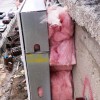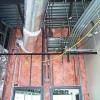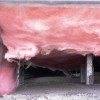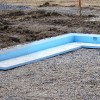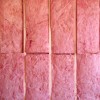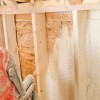How Insulation Can Save You Money
Insulation can save you money. Homeowners heat and cool their houses with various types of energy which fluctuate in price on a regular basis due to a variety of variables that are outside of their control. Lowering your thermostat, installing a programmable thermostat, or enrolling in a monthly budget plan could lower your bills; however, you may have overlooked the one thing that can truly lower your energy expenses, insulation. Investing in insulation can save you money, paying you back over time through reduced monthly energy expenses, as well as providing greater year-round comfort and a quieter indoor environment.

†
†
Insulation 101
Knowledgebase Spotlight
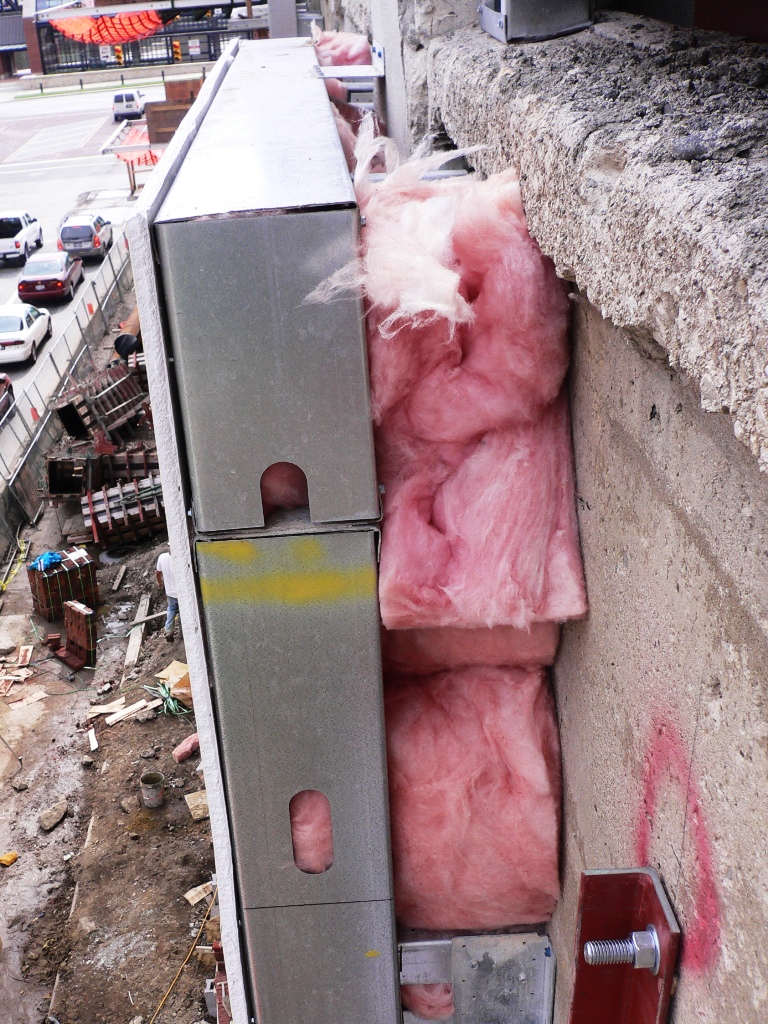
Thermal and Moisture Protection
Operation and Maintenance of Thermal Moisture Protection
Thermal Protection
Joint Protection
Common Work Results for HVAC
The purpose of insulation is to slow the transfer of heat. Heat flows from warm areas to cooler ones, even through ceilings, walls, and floors. During the winter, heat in our homes travels to the cold exterior, and during the summer, heat outside of our homes travels to the cooler interior. We, in turn, use the various types of energy to run our furnaces and replace the lost heat during the winter months and run our air conditioners to remove warm air in the summer months, so that we can maintain a desirable level of comfort within our homes. Effective levels of insulation reduce our demand for energy and lower our monthly utility bills. Insulation effectiveness is defined by a material's R-Value. R-Value is a rating or measurement that defines a material's resistance to heat flow. It is determined by a material's type, thickness, and density.
How to Install Insulation
The proper installation of insulation is just as important as its R-Value. Compressed insulation provides less resistance to heat flow than the rated value of its natural, fluffed form. Allowing cavities or channels to form due to compression or improperly attached insulation will allow unwanted air and heat movement to occur within that cavity. The best thing about adding insulation to your home is that it is fairly easy to do, and currently there are incentives to do so. Your local home improvement store carries the various types of insulation as well as any tools needed to install it, and can assist you in understanding the right product for your specific application.
Where to Install Insulation
Insulation in our homes should be installed:
- between and over the floor joists in our unfinished attics.
- on top of attic doors and hatches.
- on the inside surface of crawlspaces and basement walls.
- within exterior walls, cathedral ceilings, and floors over unfinished spaces.
- inside all voids, including small and irregular areas.
Proper installation will ensure that insulation achieves an effective and desirable resistance to heat flow.
Installation Best Practices
- Loose-filled insulation should be placed or blown to a proper density.
- You will need to take some precautions when installing insulation to ensure your safety and the safety of the home. Always wear protective clothing, hats, gloves, and glasses to eliminate skin/eye contact and irritation.
- Don't pack insulation around heat producing pipes, motors, or fixtures. You also do not want to pack insulation into an eave, because air needs to travel freely from eave vents to roof vents.
- If you have knob and tube wiring or damaged electrical wire insulation, it is a fire hazard to pack insulation around and on top of the wires. Have an electrician make the necessary repairs prior to adding insulation.
Determine R-Value and Quantity of Insulation Required
The types of materials used to construct the home, the type of fuel used to heat it, the efficiency of the heating and cooling system, and the local climate all work together to determine the recommended R-Value for insulation within a home. For example, a home in Orlando, Fla. does not need as much R-Value as a home in Detroit, Mich., given that they are both wood construction with the same natural gas furnace. The U.S. Department of Energy has developed a nice online tool called the ZIP-Code Insulation Program, which recommends an R-Value rating for insulation based on the criteria you enter.
Depending on the age of your home and what improvements have been made through the years, you may have less insulation than what is actually recommended by today's standards. Insulation standards can be best be defined as current "rules of thumb," which are based upon consumers' desired levels of comfort, building practices, local climate, and costs. If you live in a home that is more than ten years old, it is a good idea to check the type and thickness of your insulation and correlate the corresponding R-Values. Compare these values to today's standards to determine if additional insulation is recommended. Prior to adding insulation, you should ensure that your home is properly sealed to prevent air and moisture infiltration.
Common Types of Insulation
Insulation is typically installed in one of the following forms: batts or blankets, loose-filled or blown, spray or foam in place, and rigid boards.
- Batt or blanket insulation is typically used inside walls, floors and ceilings, and along foundation walls. It can be made of fiberglass, mineral wool, plastic, or natural fibers.
- Loose-filled or blown insulation is typically used in enclosed wall or floor cavities and along unfinished attic floors. This type of insulation is made from cellulose, fiberglass, or mineral wool.
- Spray or foam in place insulation is typically used in enclosed wall or floor cavities and along unfinished attic floors, similar to loose-filled. This type of insulation is made from cementitious or phenolic foam, polyisocyanurate, or polyurethane.
- Rigid board insulation is typically used inside walls, floors and ceilings, and along foundation walls. It is made from polystyrene, polyisocyanurate, or polyurethane.
Each of these materials and forms of insulation have different installation methods, specific use applications, R-Values, and each offer their own advantages and disadvantages. When determining an effective insulation, it is important to consider these differences as well as the cost of the material. The lower the cost, the quicker the payback on your investment.

Jeff Calcamuggio
Jeff is an Editor-at-Large for Buildipedia.com who writes and edits Featured At Home and Knowledgebase content. Prior to joining Buildipedia, Jeff's work experience included carpentry, construction documentation, specification writing, construction administration, project management, and real estate property inspection. Jeff is a member of the Construction Specifications Institute (CSI) and an educator at Columbus State Community College and enjoys challenging DIY home improvement projects.
†

